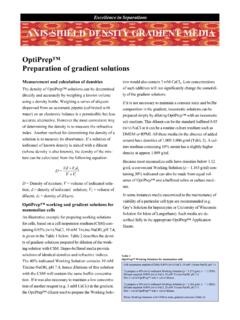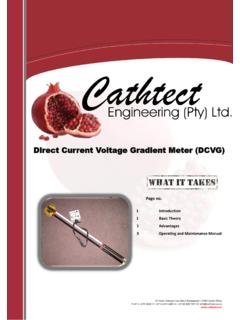Transcription of arXiv:1710.03740v3 [cs.AI] 15 Feb 2018
1 Published as a conference paper at ICLR 2018 MIXEDPRECISIONTRAININGS haran Narang , Gregory Diamos, Erich Elsen Baidu Research{sharan, Micikevicius , Jonah Alben, David Garcia, Boris Ginsburg, Michael Houston,Oleksii Kuchaiev, Ganesh Venkatesh, Hao WuNVIDIA{pauliusm, alben, dagarcia, bginsburg, mhouston,okuchaiev, gavenkatesh, the size of a neural network typically improves accuracy but also in-creases the memory and compute requirements for training the model. We intro-duce methodology for training deep neural networks using half-precision float-ing point numbers, without losing model accuracy or having to modify hyper-parameters.}}
2 This nearly halves memory requirements and, on recent GPUs,speeds up arithmetic. Weights, activations, and gradients are stored in IEEE half-precision format. Since this format has a narrower range than single-precision wepropose three techniques for preventing the loss of critical information. Firstly,we recommend maintaining a single-precision copy of weights that accumulatesthe gradients after each optimizer step (this copy is rounded to half-precision forthe forward- and back-propagation). Secondly, we propose loss-scaling to pre-serve gradient values with small magnitudes.
3 Thirdly, we use half-precision arith-metic that accumulates into single-precision outputs, which are converted to half-precision before storing to memory. We demonstrate that the proposed methodol-ogy works across a wide variety of tasks and modern large scale (exceeding 100million parameters) model architectures, trained on large Learning has enabled progress in many different applications, ranging from image recognition(He et al., 2016a) to language modeling (Jozefowicz et al., 2016) to machine translation (Wu et al.,2016) and speech recognition (Amodei et al.)
4 , 2016). Two trends have been critical to these results- increasingly large training data sets and increasingly complex models. For example, the neuralnetwork used in Hannun et al. (2014) had 11 million parameters which grew to approximately 67million for bidirectional RNNs and further to 116 million for the latest forward only Gated RecurrentUnit (GRU) models in Amodei et al. (2016).Larger models usually require more compute and memory resources to train. These requirementscan be lowered by using reduced precision representation and arithmetic. Performance (speed) ofany program, including neural network training and inference, is limited by one of three factors:arithmetic bandwidth, memory bandwidth, or latency.
5 Reduced precision addresses two of theselimiters. Memory bandwidth pressure is lowered by using fewer bits to to store the same number ofvalues. Arithmetic time can also be lowered on processors that offer higher throughput for reducedprecision math. For example, half-precision math throughput in recent GPUs is 2 to 8 higherthan for single-precision. In addition to speed improvements, reduced precision formats also reducethe amount of memory required for deep learning training systems use single-precision (FP32) format. In this paper, we addressthe training with reduced precision while maintaining model accuracy.
6 Specifically, we train vari- Equal contribution Now at Google Brain [ ] 15 Feb 2018 Published as a conference paper at ICLR 2018ous neural networks using IEEE half-precision format (FP16). Since FP16 format has a narrowerdynamic range than FP32, we introduce three techniques to prevent model accuracy loss: maintain-ing a master copy of weights in FP32, loss-scaling that minimizes gradient values becoming zeros,and FP16 arithmetic with accumulation in FP32. Using these techniques we demonstrate that awide variety of network architectures and applications can be trained to match the accuracy FP32training.
7 Experimental results include convolutional and recurrent network architectures, trainedfor classification, regression, and generative tasks. Applications include image classification, imagegeneration, object detection, language modeling, machine translation, and speech recognition. Theproposed methodology requires no changes to models or training have been a number of publications on training Convolutional Neural Networks (CNNs) withreduced precision. Courbariaux et al. (2015) proposed training with binary weights, all other ten-sors and arithmetic were in full precision.
8 Hubara et al. (2016a) extended that work to also binarizethe activations, but gradients were stored and computed in single precision. Hubara et al. (2016b)considered quantization of weights and activations to 2, 4 and 6 bits, gradients were real et al. (2016) binarize all tensors, including the gradients. However, all of these approacheslead to non-trivial loss of accuracy when larger CNN models were trained for ILSVRC classifica-tion task (Russakovsky et al., 2015). Zhou et al. (2016) quantize weights, activations, and gradientsto different bit counts to further improve result accuracy.
9 This still incurs some accuracy loss andrequires a search over bit width configurations per network, which can be impractical for largermodels. Mishra et al. improve on the top-1 accuracy achieved by prior weight and activation quan-tizations by doubling or tripling the width of layers in popular CNNs. However, the gradients arestill computed and stored in single precision, while quantized model accuracy is lower than that ofthe widened baseline. Gupta et al. (2015) demonstrate that 16 bit fixed point representation can beused to train CNNs on MNIST and CIFAR-10 datasets without accuracy loss.
10 It is not clear howthis approach would work on the larger CNNs trained on large datasets or whether it would work forRecurrent Neural Networks (RNNs).There have also been several proposals to quantize RNN training. He et al. (2016c) train quantizedvariants of the GRU (Cho et al., 2014) and Long Short Term Memory (LSTM) (Hochreiter andSchmidhuber, 1997) cells to use fewer bits for weights and activations, albeit with a small loss inaccuracy. It is not clear whether their results hold for larger networks needed for larger datasetsHubara et al. (2016b) propose another approach to quantize RNNs without altering their approach to quantize RNNs is proposed in Ott et al.
![arXiv:0706.3639v1 [cs.AI] 25 Jun 2007](/cache/preview/4/1/3/9/3/1/4/b/thumb-4139314b93ef86b7b4c2d05ebcc88e46.jpg)

![arXiv:1301.3781v3 [cs.CL] 7 Sep 2013](/cache/preview/4/d/5/0/4/3/4/0/thumb-4d504340120163c0bdf3f4678d8d217f.jpg)
![@google.com arXiv:1609.03499v2 [cs.SD] 19 Sep 2016](/cache/preview/c/3/4/9/4/6/9/b/thumb-c349469b499107d21e221f2ac908f8b2.jpg)











